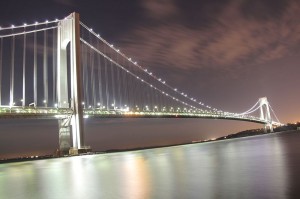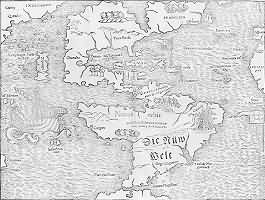The Mysterious Life and Adventure of Giovanni da Verrazanno
You can’t even contemplate how many of your academic issues will be sorted out the moment you opt to demand seasoned professional support and spend on essay records
The Mysterious Life and Adventures of Giovanni da Verrazano.
By: Cam Carr
Giovanni da Verrazano was born in 1485 in Val di Greve. South of Florence, Republic of Florence, Italy (Some French scholars believe that Giovanni may have been born in France. ) His parents were Piero Andrea di Bernardo da Verrazano and Fiametta Capelli. Not much is known about his life before 1506. According to The Verrazano Center for Historical Studies ” From a very young age Giovanni was instructed in the pleasure of adventure, such that he decided to visit the Orient purely to further his education and widen his experience, and the date of this project was sooner than anticipated due to intolerance of the fatuous government of Piero de Medici.”. After 1506 he started his training to be a navigator in Dieppe, France. Sometime in 1508, he took his first trip to the Americas with Captain Thomas Aubert.
In 1524, King Francis I of France chose and sponsored Giovanni to explore the coast of North America, to find a path through it to the Orient. That was why Giovanni was exploring all the bays on the East coast. After seeing one of the bays he wrote a letter with these lines,
“We called it Annunciato from the day of arrival, where was found an isthmus a mile in width and about 200 long, in which from the ship, was seen the oriental sea between the west and north. Which is the one, without doubt, which goes about the extremity of India, China and Cathay. We navigated along the said isthmus with the continual hope of finding some strait or true promontory at which the land would end toward the north in order to be able to penetrate to those blessed shores of Cathay.”. For a long time the Europeans believed him, so their maps were wrong. This was known as ” The False Sea of Verrazano.”.
This is the route people thought Giovanni took on his trip to North America:
Giovanni was given four ships by King Francis the 1st, but two of them were shipwrecked and the third one was sent to North Carolina back with a cargo of prizes from privateering on the Spanish coast. The last ship was a ship called “La Dauphine.”

Model of Giovanni’s ship, “La Dauphine” at the Martine Museum of Rouen, France. The museum has the plan to build a replica of the ship and sail it to the New York Bay possibly in 2024, for the 600th anniversary since the finding of the New York Harbor.
” La Dauphine” was built in La Havre, Normandy in 1518 and is a Carrack ship design. It has three masts and weighs 100 tons. The ship could carry about 50 men. “La Dauphine” is French for “The Dolphin.”

Did you know that a bridge was named after Verrazano? Verrazano Narrows Bridge, named for the famous explorer, opened in 1964 and was the longest suspension bridge in the world until 1981.
In honor of his discovery of New York Harbor Verrazano day is celebrated every April 17th in New York state.
Giovanni’s greatest discovery may have been on his trip to the Carolinas in 1524. Giovanni found a place that he thought was beautiful, and he named it Arcadia. Today, many people believe that the land Giovanni had described was Kitty Hawk, North Carolina. After he finished exploring Arcadia, he headed up the North along the coast where he discovered the New York Harbor, and anchored his ship ” La Dauphine” in the Narrows. Giovanni da Verrazano was the very first European navigator ever to discover the New York Harbor.
He managed to explore the New York Harbor, and Block Island. He explored the bay and interacted with the Native Americans living there. He thought that most of the Native Americans there were good, and said that “The people are unto the others, and clad with feather of fowls of diverse colors. They came towards us very cheerfully, making great shouts of admiration, showing us that we might come to land most safely on our boat.”. Giovanni not as happy with the Abnaki of Maine, he said that “…of such crudity and evil manners, so barbarous, that despite all the signs we could make, we could never converse with them.”.
Later he met the friendly native American Wampanoag tribe. Giovanni traded food and clothes with them. Giovanni made several voyages to the Eastern Mediterranean, and went to Newfoundland. He also explored and wrote about the wonderful Bay of Fundy and Nova Scotia. In 1527, his men mutinied and were forcing him to return to France, but ended up in Brazil instead. So they collected logwood to sell and made a big profit and that made his crew happy. Giovanni was a privateer for the French and captured a Spanish treasure ship that had 2 million dollars worth of gold!
In 1528, on Giovanni’s third voyage, he was exploring what was probably the island of Guadeloupe. The unfriendly native American Carib tribe attacked Giovanni and his crew as soon as they got to land. They captured Giovanni and killed him by cooking and eating him, then ate him in front of his brother.
“By rude people they were suddenly taken / they attacked them / and killed them and laid them on the ground / They were cut in pieces to the bone / and by them they were eaten and in that country / was Verrazzano’s brother and / he saw the soil red with his brother’s blood / And being on the ship he could not give assistance / he saw all this and then in Rome / where he came one day, crying / he narrated this crude story to us.” – Poem about Giovanni da Verrazano’s death.
Anlass für das erscheinen hausarbeiten schreiben lassen ist, dass die urheberrechte ende 2015 ausgelaufen sind



